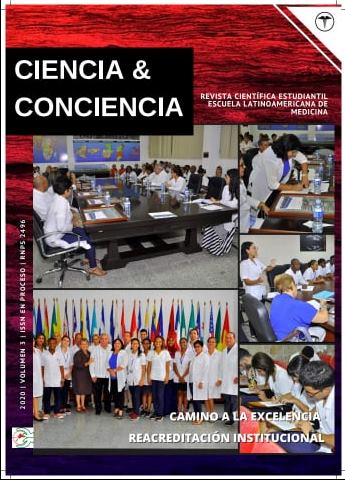INCIDENCIA DE LA SIFILIS EN LA PROVINCIA DE LAS TUNAS EN EL PERÍODO 2012-2014 / INCIDENCE OF SYPHILIS IN THE PROVINCE OF LAS TUNAS IN THE PERIOD 2012-2014
Resumen
Las infecciones de transmisión sexual han adquirido una extrema importancia para la salud pública mundial; son un grupo heterogéneo de infecciones transmisibles a través de relaciones sexuales con y sin penetración sexual. La sífilis es una infección bacteriana causada por la bacteria treponema pallidum, generalmente de transmisión sexual. En Cuba, en la provincia de Las Tunas por cada 100000 habitantes, la tasa de sífilis era 10.6 en el año 2012. Esa tasa siguió aumentando hasta alcanzar los valores de 24.3 por cada 100000 habitantes en el año 2014; por lo que fue un gran aumento de número de personas infectadas en este periodo. El presente trabajo de revisión bibliográfica fue realizado con el objetivo de caracterizar la incidencia de la sífilis en la provincia de las Tunas en el período 2012-2014. Fueron consultados e interpretados 13 artículos científicos acotados en todo lo largo del trabajo; se utilizaron principalmente como técnicas de recolección de datos el cuestionario y la historia de salud familiar. Las incidencias de sífilis, en la provincia de Las Tunas, fueron más frecuentes en las personas jóvenes donde hay una correlación con mayor actividad sexual en que la persona tiene múltiples parejas o hay cambio de la pareja con frecuencia. Por lo que se concluyó en el trabajo que la frecuencia de actividad sexual, el sexo de la persona y la edad son los principales factores de riesgo que influyen en la incidencia de la sífilis en la provincia durante este periodo de tiempo. Palabras clave: infección de transmisión sexual, sífilis, factores de riesgo. ABSTRACT Sexually transmitted infections have become extremely important for global public health; they are a heterogeneous group of infections transmitted through sexual intercourse with and without sexual penetration. Syphilis is a bacterial infection caused by the bacterium treponema pallidum, usually sexually transmitted. In Cuba, in the province of Las Tunas for every 100,000 inhabitants, the rate of syphilis was 10.6 in 2012. This rate continued to increase until reaching the values of 24.3 per 100,000 inhabitants in 2014; so it was a large increase in the number of infected people in this period. The present work of bibliographic review was carried out with the objective of characterizing the incidence of syphilis in the province of Las Tunas in the period 2012-2014. Thirteen limited scientific articles were consulted and interpreted throughout the work; The questionnaire and family health history were mainly used as data collection techniques. The incidences of syphilis, in the province of Las Tunas, were more frequent in young people where there is a correlation with greater sexual activity in which the person has multiple partners or there is frequent change of the partner. Therefore, it was concluded in the work that the frequency of sexual activity, the sex of the person and the age are the main risk factors that influence the incidence of syphilis in the province during this period of time. Keywords: sexually transmitted infection, syphilis, risk factors.Descargas
Publicado
2021-12-02
Cómo citar
1.
Pineda Fernández C, orte Paulino RF, Schouten G, Taamari A, Mahounan Toudonou C. INCIDENCIA DE LA SIFILIS EN LA PROVINCIA DE LAS TUNAS EN EL PERÍODO 2012-2014 / INCIDENCE OF SYPHILIS IN THE PROVINCE OF LAS TUNAS IN THE PERIOD 2012-2014. RNPS 2492 [Internet]. 2 de diciembre de 2021 [citado 27 de diciembre de 2025];3(1). Disponible en: https://revcienciaconciencia.sld.cu/index.php/ciencia-conciencia/article/view/53
Número
Sección
Articulos de Revisión



